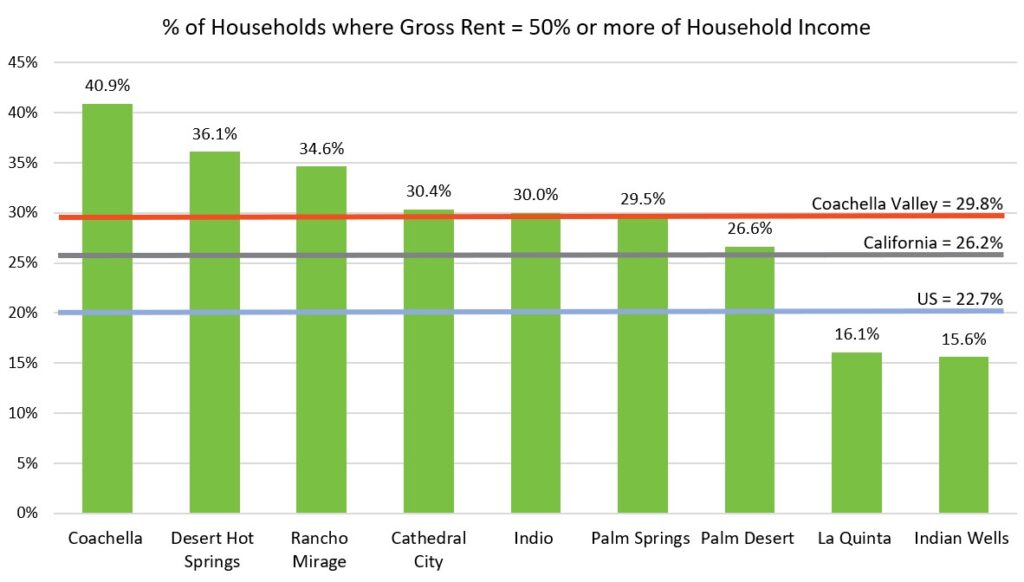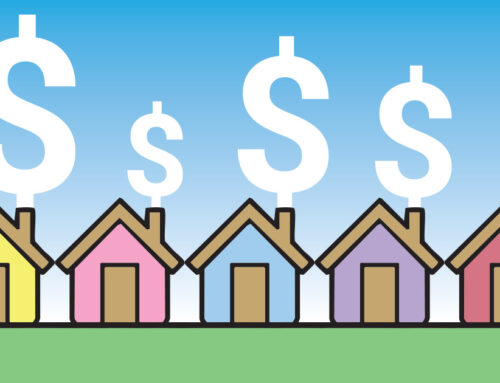A recent headline from a Desert Sun story dramatically summarized the current housing crisis: “‘There’s no place to go’: Coachella Valley rents skyrocket, squeezing working class.” According to the article, “rents in a majority of Coachella Valley Cities have grown between roughly 45% and 55% over the last three years.” At the same time, wages have not kept up. It goes on to say that this situation, if unaddressed, could “drag on the valley’s economic growth.”
The U.S Census American Community Survey (ACS) completes a rolling 60-month survey to assess additional demographic data about the American public that is not covered by the decennial census. The following graph and map display one such data point: the 5-year estimate of the number of households with gross rent that is 50% or more of their household income. Gross Rent is the contract rent plus the estimated average monthly cost of utilities if paid by the renter.
This graph compares the average percentage of such households in the nine CV cities to averages for the Coachella Valley as a whole, California, and the US. For example, of those households in Desert Hot Springs that rent, 36% of them spend 50% or more of their household income on rent. Seven of the nine CV cities have averages higher than California or the US.
Here is a map showing the same data but aggregated to the Census Block group level. Note that the rental burden is spread throughout the valley. Observe the pockets of orange, representing places where 50% of renters pay 50% or more of their income to rent.
Look closely at the black areas on the map representing neighborhoods where 100% of renters represent the 50%+ rent burden. You might note that some of them are in very affluent areas. How can that be? First, the ACS uses a random sample and thus estimates these percentages. At a geographical level like the Census Block group, there can be sizeable statistical areas, with such a small survey pool. You can imagine block groups in Palm Desert or Rancho Mirage have very few renters (year-round renters, not seasonal). And of those, since rent would be very high in these communities, nearly all may indeed be in this rent burden category.
Regardless of estimating errors, it is evident that we have a housing crisis in our valley. Low- and middle-income workers are being squeezed out of the rental market. Our local hospitality and leisure-focused economy depends upon these workers.










